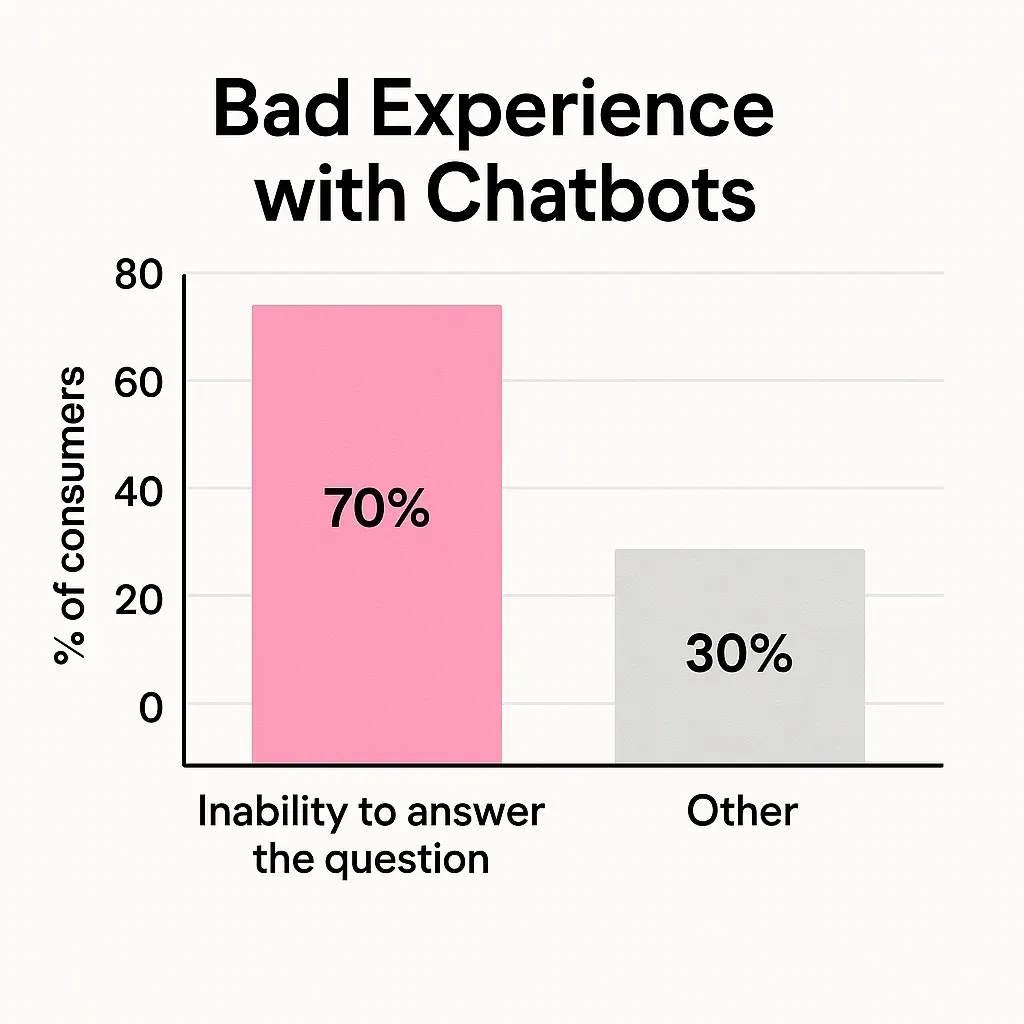What Klarna’s Pivot Reveals About the Limits of AI
Klarna, once one of the loudest voices in AI-first customer service, recently walked back a key part of its automation strategy.

Just over a year ago, Klarna – the $14.6 billion “buy now, pay later” fintech – went all-in on AI for customer support.
The company introduced an AI chatbot to handle service inquiries at scale, even claiming it could replace some 700 human agents by taking on the bulk of customer chats . Early results sounded impressive: within its first month, the AI assistant took over two-thirds of all customer service chats – about 2.3 million conversations – with average resolution times under 2 minutes.
Eager to capitalize on these “groundbreaking results,” Klarna’s leadership froze hiring for customer service roles and even shed staff, betting big that AI efficiencies would drive down costs and fill the gap left by departing employees.
Klarna’s AI was good at quick answers. Refund status, payment dates, policy reminders—it could handle those well. But once the conversation moved beyond that first exchange, the cracks started to show. Customers reported hitting dead ends. Bots regurgitated help docs. Follow-up questions stalled. And when real help was finally needed, it wasn’t always available.
In short, the automation did its job... just not all of it.

Internally, Klarna saw that key customer experience metrics were suffering. Speed alone wasn’t enough; customer satisfaction was dipping as people encountered impersonal, sometimes unhelpful interactions and had limited access to human help when they truly needed it. External research echoes this trend: more than two-thirds of consumers say they’ve had a bad experience with chatbots – the top complaint being the bot’s inability to actually answer the question at hand.
In Klarna’s case, frustrated customers began voicing that the AI-driven service felt too rigid and soulless. For a financial services player handling payment issues (often stressful or time-sensitive matters), this kind of friction can be dangerous. As one industry analyst put it, relying too heavily on automation can undermine the very experience you aim to improve – eroding customer trust and carrying “real financial and reputational consequences”.
Crucially, Klarna discovered that customers still demand a human touch for complex or sensitive issues. Even as the chatbot continued to handle routine inquiries (and indeed helped cut average reply times by 82% while reducing repeat inquiries by 25% ), the company realized it had swung the pendulum too far. Not every support scenario should be left to algorithms.
As Klarna’s spokesperson put it:
AI gives us speed. Talent gives us empathy. Together, we can deliver service that’s fast when it should be, and empathic and personal when it needs to be. 
In other words, AI had become a great servant for the easy issues, but a poor master of the whole customer experience.
Klarna’s experience is a useful signal—not just for fintech, but for any business navigating automation in customer-facing roles.
Here’s what it clarified:
1. Speed is not enough.
- Yes, AI can respond quickly. But if it can’t resolve, guide, or escalate properly, you’ve only compressed the timeline of a bad experience.
2. Routine ≠ simple.
- Even in calls or chats that start with a simple request, things can change. People add questions. They clarify. They reconsider. That’s not a flaw—it’s how real conversations work.
3. Empathy matters, but so does control.
- Customers want to feel understood, but more importantly, they want a clear path to resolution. That means getting the right answer, quickly, from someone—or something—that’s allowed to think two steps ahead.
At OpenCall, we don’t promise full replacement. We promise full coverage.
That means designing AI that handles the repeatable, the predictable, and the scalable—calls about scheduling, FAQs, confirmations, and reminders—but doing so in a way that respects the complexity of the humans on the other end.
We’ve already built a voice agent that handles high-volume inbound and outbound calls for clinics, service providers, and multi-site businesses. It knows when to take the lead, when to ask follow-up questions, and when to hand off. And when it does transfer, it never forgets what just happened. No repeats. No dead ends.
The core principle stays the same: automate only what you can support, and always preserve a path back to someone who can help.
If you’re considering AI support in your business—whether by phone, SMS, or chat—Klarna’s pivot should serve as a gut check.
- • Don’t start by trying to replace people. Start by reducing the repetitive work they do 100 times a day.
- • Don’t measure success by speed alone. Measure it by resolution and retention.
- • And don’t give customers a single path. Give them the one that leads somewhere useful.
OpenCall exists to make customer conversations less painful—for everyone involved. That means delivering a system that can handle complexity without getting in its own way.
If you’re exploring automation and want to do it without sacrificing quality, we’re already building for that future. And we’re not doing it in isolation. We’re learning from every call—and from every company that’s tried to do this too fast.
The lesson isn’t “AI doesn’t work.” It’s “AI needs structure, constraints, and respect for human nuance.”
That’s how we build.
And that’s why it works.
⸻
Want to learn more about how we approach automation the right way? Let’s talk.

